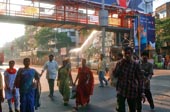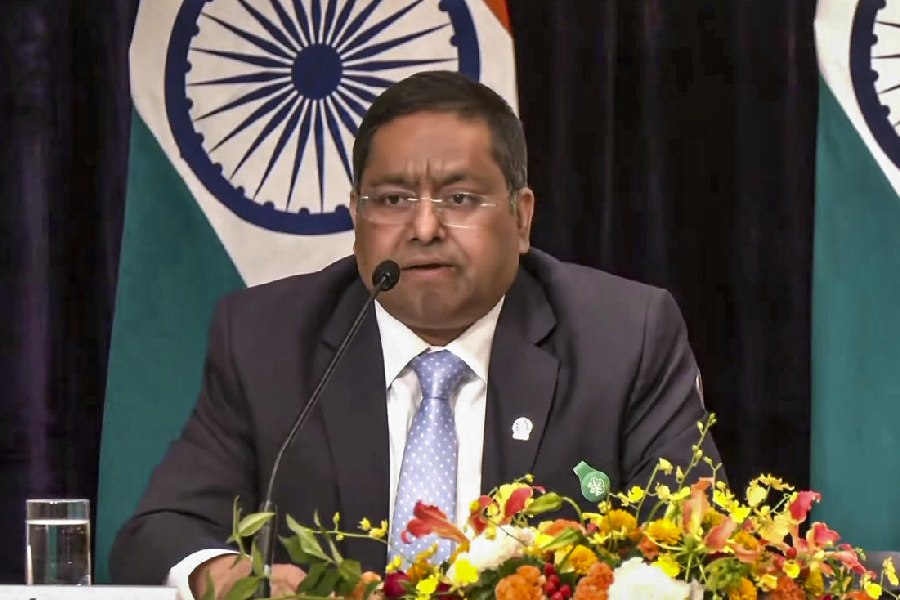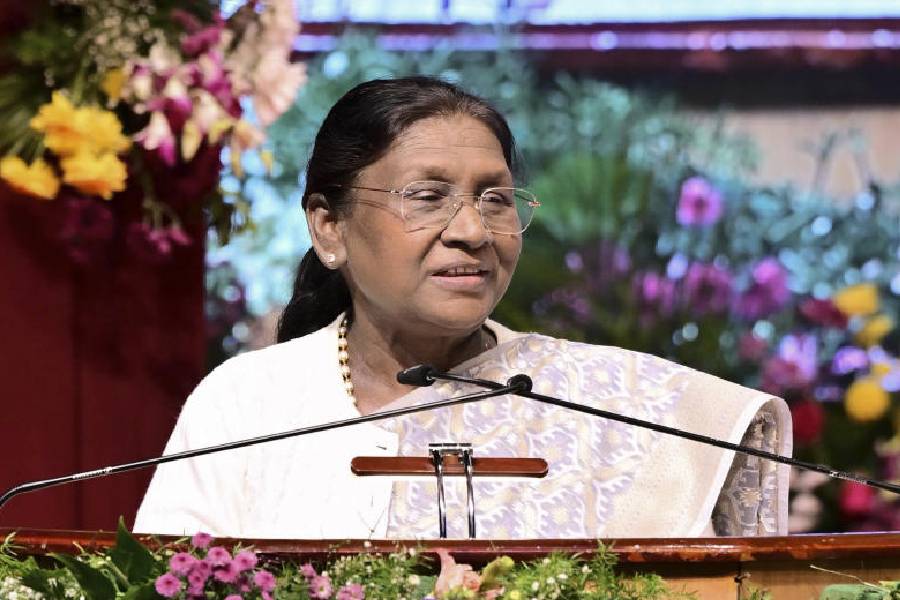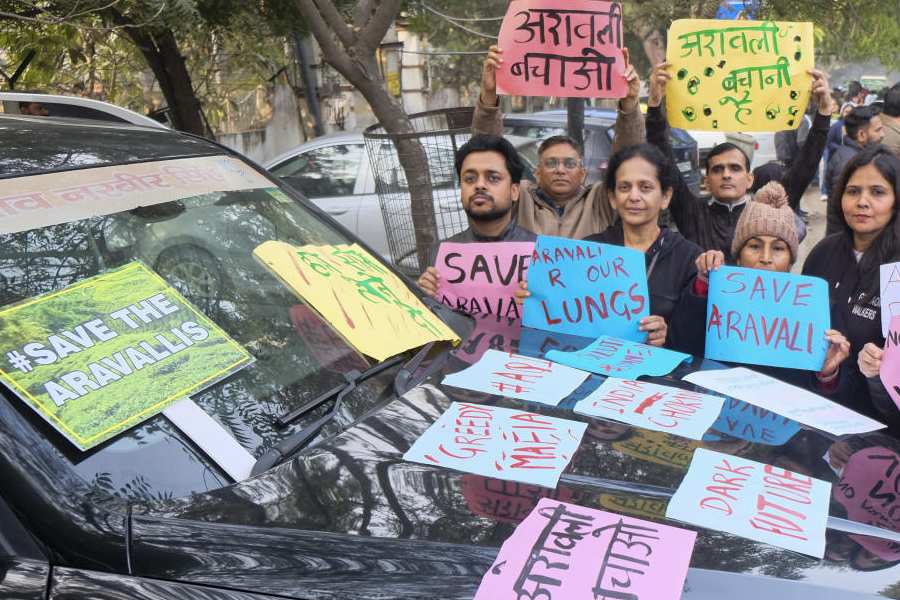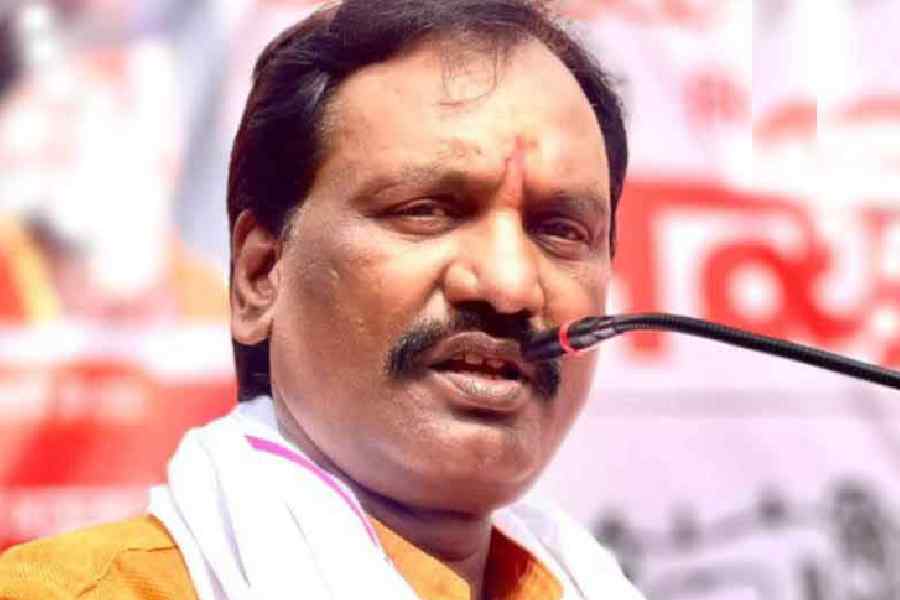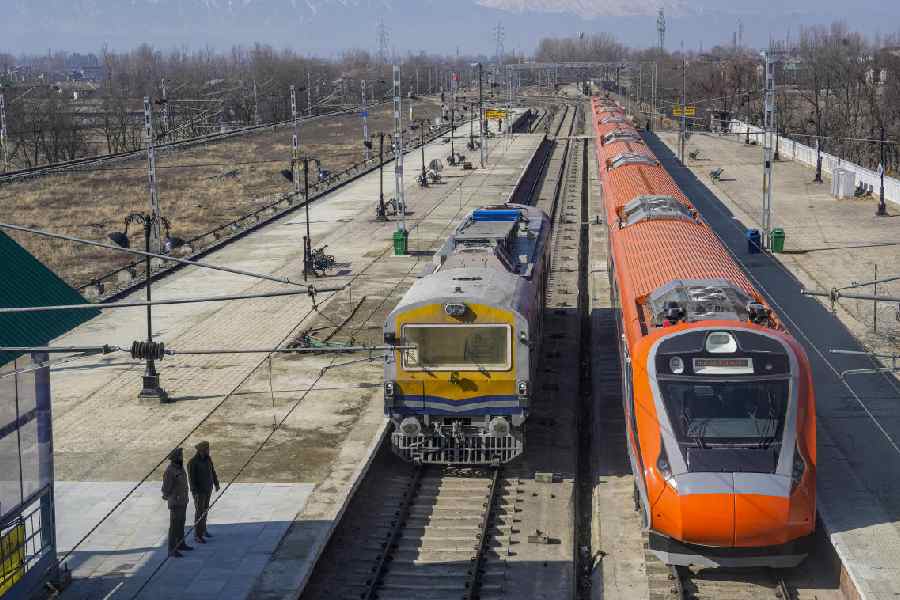 |
| Pedestrians cross the road in Sealdah without using the footbridge |
Footbridges
There are about a dozen footbridges in Calcutta, located at Gariahat, Dhakuria, Darga Road, Sealdah, Rajabazar and two each at Ultadanga and Lake Town. But they might as well as not have been there.
People would rather dodge cars and buses to cross the street in crowded Sealdah than use the footbridge.
The situation is the same at Dhakuria. At 10.30am on Saturday, there were 15 people crossing the street, while three persons were using the footbridge. One of the Ultadanga footbridges morphs into a pick-up zone at night.
Pedestrians have their excuses. Says a Dhakuria resident: “The footbridge connects the pavement to Dakshinapan. The buses and the autos do not stop there. It’s simpler to cross near the bus stop.”
Among the flyovers in the city, the least used seems to be the Bondel Gate flyover, from Rifle Range Road to Picnic Garden. Few cars go that way after dark because of the absence of lights. The flyover attracts rowdies.
The subway at 8B bus stand in Jadavpur is also not much used.
Public works department (PWD) minister Kshiti Goswami says that footbridges, as well as subways, are under-utilised. “Footbridges and subways, constructed by either the PWD or the Calcutta Municipal Corporation (CMC), are made with money from the exchequer and it amounts to a waste of public money if the facilities are not utilised.”
The minister says it is the responsibility of the traffic police to see that they are used. He attributes under-utilisation to the lack of networking between the concerned agencies.
“The traffic police are supposed to ensure that people make use of the underpasses and footbridges and not clog the streets,” says Goswami.
 |
| The international bus stand in Salt Lake |
Buses
The “international” bus stand at Karunamoyee, Salt Lake, has buses leaving for Dhaka three times a week. Two West Bengal Surface Transport Corporation (WBSTC) buses leave the stands every Monday, Wednesday and Friday. The buses have a capacity of 43 seats each.
Booking officer Rajiv Kumar Pal says: “There are about 40 passengers travelling in two buses every day. But it varies. The buses are empty most of the time. Generally, the Bangladesh Road Transport Corporation buses that come from Dhaka have more people.”
Out of 1,159 Calcutta State Transport Corporation (CSTC) buses, only about 55 per cent are used. The CSTC lacks a schedule.
Routes are another problem. While some routes are overcrowded, others have very few takers.
Asok Bhattacharya, the managing director of CSTC, says: “There are unutilised facilities but we have undertaken studies to see how to improve the system. The primary report has been submitted to us.”
He adds: “We are also planning to use the Geographical Information System (GIS) to understand how many buses are required and on which routes.”
Out of the 45 per cent unutilised buses, many are old, damaged and do not function properly, according to Bhattacharya.
 |
Parkomat
The much-hyped underground parking plaza at New Market, Parkomat, has turned out to be one of city’s most under-utilised infrastructure facilities.
This Rs 32-crore parking plaza has came up as a joint venture between the CMC and Simplex Projects Limited, a private company, with 284 slots for cars and a target of 1,200 cars rolling in every day. Chief minister Buddhadeb Bhattacharjee inaugurated it on April 20.
Three months later, car-owners don’t seem to be too enthusiastic about driving down. Only 40 cars are parked every day.
The chairman of Simplex projects, B.K. Mundra, says as long the CMC does not ban roadside parking in the area, no one will park his or her car in the plaza.
 |
Police booths
There are 95 police booths in the city. But hardly anyone approaches them. And many remain closed at night.
Says Bimal Dutta, a West Bengal Railway Police officer who mans the booth near the entrance to Sealdah station: “Sometimes you face 10 complaints in an eight-hour shift and sometimes none at all.”
The deputy commissioner (headquarters) of Calcutta Police, Gyanwant Singh, says: “Police booths deter potential lawbreakers and adds security. That is the primary motive. The secondary motive is that people can approach the booths for help.”
He admits that the number of people approaching the booths is not very high. “Booths in central Calcutta are busier than those in north Calcutta,” he adds.
 |
Kolkata terminal
The Kolkata terminal in Chitpur looks desolate, especially in comparison to its counterparts in Sealdah and Howrah. It was built as the third major railway terminal for the city, from which long-distance trains would run. Work started about three years ago at the station, where the old Chitpur railway goods yard stood. But there’s hardly any bustle at the new, swank station, spread over 72,000 sq ft. It has three functioning platforms. The other two have not been commissioned since the station was thrown open in January last year. Ten local trains stop here. The seven long-distance trains include Jammu Tawai, Purbanchal Express and Lal Quila Express.
The railway authorities, however, are reluctant to admit that the station is under-utilised. “The logistic support available at this moment to run long-distance trains does not permit running of trains from here. Expansion of logistic support is in the offing,” says an official.
Few passengers imply few customers. So there are no food stalls. There are few buses to the station. P.K. Das, at the station to put his son on the train, says: “Getting here by pubic transport is out of the question. There is no place you can buy good food. There are places selling dry food but no shops selling meals.”
A fleet of state buses connects the rail station to New Town. “These buses are generally empty and are not regular. The route only helps people who want to go to Sector V,” admits Subhashis Guha Neogi, a senior commercial clerk at the station. The rail station has a taxi stand but no prepaid booth.
 |
Extensions
The extension of Circular railway service from the Dum Dum Metro Railway station to the airport and the new Electric Multiple Unit (EMU) service from Howrah to Belur Math, under the Howrah division, have remained unutilised.
Hardly 10 passengers take the trains to and from the airport. “The two trains from Belur Math to Howrah via Liluah, one of them scheduled for office-goers on their way back home, run almost empty. A section of Howrah-bound passengers who want to avoid the rush wait for the train at Liluah station to reach Howrah comfortably,” says the senior PR manager (Eastern Railways), Samir Goswami.
 |
Tramways
Besides being eco-friendly, trams are also one of the few means of public transport that can carry a substantial number of commuters without occupying too much road-space. “But in Calcutta less than two per cent of the commuters take trams,” says Debashis Bhattacharya, a scientist with the Indian Institute of Chemical Biology, Calcutta, who has taken up the cause of the Calcutta trams.
One reason could be uncertainty. Trams break down quite often due to lack of maintenance. “Sometimes passengers have to wait for a long time for a particular tram,” says Bhattacharya.
There are about 300 trams in Calcutta. Only about a hundred do the rounds every day. Trams have made a comeback all over the world and now ply in 450 countries, including the UK, the US and Germany.

